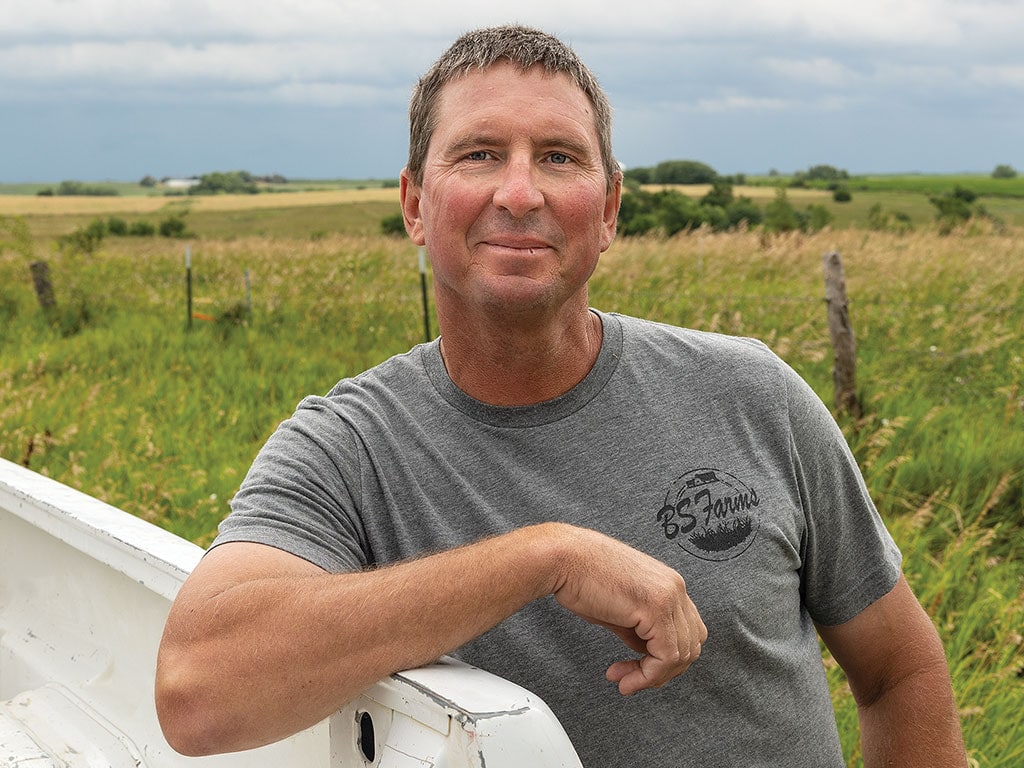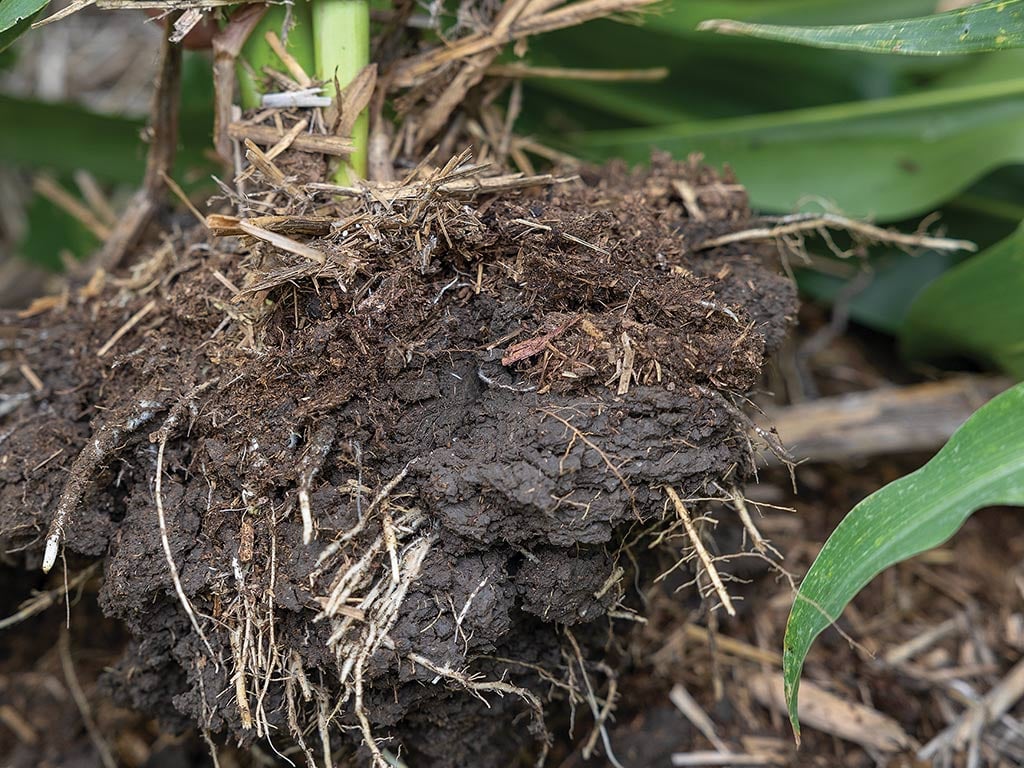Agriculture, Sustainability November 01, 2023
More from Less
.
Livestock integration pushes cash crop performance.
Not many farm couples can raise four kids on just 520 acres, but Axtell, Kansas, farmers Bill and Sandy Buessing did.
Diversity and intensity are the answers, Bill says. The farm includes small cow-calf and grass-finished beef operations, 600-head of grain-finished beef, plus sheep, chickens and pigs. They aim to have something growing on each of their 460 acres every day of the year.
"There is a lot more flexibility, but it requires more management. You've got to think creatively, and right now I've got the system working for me," Bill says. "But it wasn't like all of a sudden one night I came up with the plan. It takes feed, water, and fence."
Above. Cover crops and livestock production integrate seamlessly in Axtell, Kansas, farmer Bill Buessing's system.Buessing plants as many as 25 species of covers to provide high-quality animal feed, and to feed the soil biology.
Cover crop diversity. Years ago, Bill's grandfather, William, grew oats on which dairy cows grazed amid the rolling hills of northeast Kansas. In the 1980s, the younger Buessing recalls his father, Maurice, grew red, white, and yellow blossom sweet clover on set-aside acres, while neighbors were tilling up the land.
"They were growing cover crops before we called them cover crops," he recalls.
Taking a page from his forefather's books of animal husbandry, Bill adopted cover crops in rotation with corn in the mid-1990s, when he began farming. If conditions ever necessitated, he could graze or hay any of the crops grown on the farm.
"The reason I do things the way I do is because my dad had three sons. The only way I could farm is on small acreage," he says. "I had to figure out how to make small acreage pay. By diversifying and intensifying, you stack things on top of each other."
Almost all of Buessing's crops walk off the farm as live animals. Instead of cash crops of corn and soybeans in rotation—common in this geography—Buessing plants conventional corn for earlage, which is stored on site for cattle feed. Cereal rye is planted into the corn stubble; he'll retain the harvested seed. After cereal rye harvest, Buessing revs up the crop rotation by planting a multi-species cover crop mix, the makeup of which depends on which animals graze those fields. One of his mixes for cattle includes some 25 species of seeds, with cool and warm season grasses and broadleaves; brassicas and legumes. Nutritious feed for livestock is the priority, but Buessing also aims to feed soil biology with diverse root branching activity and root exudates.
In a corn field planted into cereal rye, Buessing notes how the cereal rye residue is almost all gone.
"If there's nothing growing in here, the residue lasts a long time. But if there is a green canopy growing above it, the soil biology decomposes that residue much faster," he notes.
"It is hard to break out individually, but taken as a whole the system works best."
Each component of Buessing's system leads profitably to the next. After a modestly successful cereal rye harvest last year, he planted a diverse cover crop mix, which produced more than 5.2 tons of dry matter per acre. Nutrient analysis of the mix showed it contained roughly 59 pounds of phosphorus, 164 pounds of nitrogen and 312 pounds of potash. The rule of thumb is that about half the nutrients will be available for the next crop; therefore, the 2023 corn crop planted in that same space has about 90 pounds of free nitrogen—in addition to the high-quality grazing.
Essential animals. Livestock complete the circle, Buessing says.
"Without them, you're leaving part of the pie on the table. Maybe you can get half or three-quarters of the pie without them, but with cattle and sheep you're getting the whole thing," he says. "If you don't own livestock, maybe a neighbor does and you can help them out."
Fred Provenza, retired animal scientist at Utah State University, notes that animal saliva stimulates soil biology, and manure and urine deposits help feed plants. Buessing believes that to be true.
"Mother Nature didn't invent the prairie without animals. I believe having cattle in the field helps jump start the system," Buessing says. "You can't let them graze it continuously, but when grazing in short durations, they can really change the ecosystem for the better." ‡
Read More

AGRICULTURE, FARM OPERATION
Rising to the Occasion
Family steps up during time of crisis.

RURAL LIVING
Tisher's Treasures
This South Dakota farm museum is a living rural history lesson.



